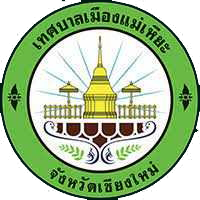Articles
บทความแม่เหียะ เมืองแห่งความพร้อม และเมืองสีเขียวเพื่อการนันทนาการ

ราว 10 ปีที่ผ่านมาการพัฒนาเมืองเชียงใหม่เริ่มกระจายตัวออกอย่างเห็นได้ชัด จากพื้นที่ใจกลางเมืองสู่พื้นที่รอบข้างในรัศมีวงแหวนรอบที่ 1 และ 2 ตามลำดับ แม่เหียะ คือพื้นที่ระยะประชิดกับเขตเมืองเชียงใหม่ด้านทิศใต้ มีถนน 2 สายหลักผาดผ่าน ได้แก่ ถนนเชียงใหม่-หางดง เส้นทางหลักเข้าออกเมืองทางด้านทิศใต้ และถนนวงแหวนรอบที่ 2 (ถนนสมโภชเชียงใหม่ 700 ปี) โดยมีสี่แยกขนาดใหญ่ ‘แยกหางดง’ เป็นพื้นที่กระจุดตัวของย่านการค้าสำคัญ และใจกลางความคับคั่งของเมืองแม่เหียะ
จุดเด่นนอกจากการเป็นเมืองขนาดย่อมๆ ที่อยู่ติดกับเมืองเชียงใหม่ ความหลากหลายของพื้นที่ (การใช้ประโยชน์ที่ดิน) ยังเป็นอีกหนึ่งปัจจัยส่งเสริม และเป็นข้อได้เปรียบของเทศบาลเมืองแม่เหียะ เมื่อเทียบกับพื้นที่อื่นๆ ในปริมณฑลรอบเขตเมือง เพราะการมีใจกลางย่านการค้า และที่อยู่อาศัยไม่ห่างจากตัวเมืองเชียงใหม่ ไม่ไกลจากสนามบินนานาชาติเชียงใหม่ มีห้างการค้าขนาดใหญ่ และยังมีพื้นที่ว่าง กับพื้นที่เกษตรกรรม ที่มีศักยภาพในการลงทุน ทั้งการปรับเปลี่ยนการเกษตรที่ให้ผลตอบแทนสูง หรือการพัฒนาโครงการที่อยู่อาศัย รวมไปถึงการมีพื้นที่อุทยานแห่งชาติดอยสุเทพ-ปุย อยู่ในพื้นที่ พร้อมกับพื้นที่สีเขียวเพื่อนันทนาการขนาดใหญ่ เช่น อุทยานหลวงราชพฤกษ์ (พืชสวนโลก) เชียงใหม่ไนท์ซาฟารี และสวนพฤกษศาสตร์แม่เหียะ (ป่าในเมือง) รวมไปถึงศูนย์วิจัย สาธิตและฝึกอบรมการเกษตรแม่เหียะ ที่มีแปลงพืชไร อ่างเก็บน้ำ และบรรยากาศร่มรื่นเหมาะสมสำหรับการออกกำลังกาย และกิจกรรมนันทนาการความพร้อมทั้งการเป็นชุมชนเมือง การมีพื้นที่สีเขียว พื้นที่ป่าอนุรักษ์ ในสัดส่วนเกือบจะครึ่งๆ ทำให้พื้นที่เมืองแม่เหียะ มีลักษณะความสมดุลทางสิ่งแวดล้อมและการเป็นเมือง ถือเป็นทั้งศักยภาพกับโอกาสสำหรับผู้อยู่อาศัยที่จะมีคุณภาพชีวิตที่ดี และรื่นรมย์ได้ไม่ยาก
นอกจากสภาพแวดล้อมเชิงกายภาพที่มีความพร้อม พลังการมีส่วนร่วมของประชาชน และท้องถิ่นซึ่งนำโดย นายกเทศมนตรีเมืองแม่เหียะ และเจ้าหน้าเทศบาลเมืองแม่เหียะ คือกำลังสำคัญในการขับเคลื่อนการพัฒนาเมือง และเป็นที่ยอมรับอย่างกว้างในเรื่องของวิสัยทัศน์การพัฒนาเมืองที่รุดหน้า และลงมือทำจริงจนเกิดความเปลี่ยนแปลง เป็นที่รับรู้ รับทราบ และชื่นชมทั้งในกลุ่มท้องถิ่น และกลุ่มงานพัฒนาเมือง
ด้วยเหตุนี้เทศบาลเมืองแม่เหียะ และสถาบันวิจัยและพัฒนาพลังงานนครพิงค์ มหาวิทยาลัยเชียงใหม่โดยการสนับสนุนทุนวิจัยจาก หน่วยบริหารและจัดการทุนด้านการพัฒนาระดับพื้นที่ (บพท.). การพัฒนากลไกและต้นแบบธุรกิจที่เอื้อต่อการลงทุนเชิงพื้นที่ เพื่อมุ่งสู่การเป็นเมืองคาร์บอนต่ำที่น่าอยู่ เทศบาลเมืองแม่เหียะ
โดยมีวัตถุประสงค์การดำเนินงาน
1. เพื่อออกแบบและจัดทำเส้นทางเส้นทางท่องเที่ยวแบบบูรณาการภายใต้แนวคิด “แม่เหียะ เมืองแห่งกิจกรรมสีเขียว (Mae Hia: Active Green City)”
2. เพื่อจัดทำแผนธุรกิจของกลุ่มผู้ปลูกผักอินทรีย์ชุมชนแม่เหียะ
3. เพื่อศึกษาและออกแบบโครงข่ายเส้นทางการเดินรถยานยนต์ไฟฟ้าในเขตพื้นที่ตำบลแม่เหียะ
4. เพื่อพัฒนาระบบบริหารจัดการเศษอาหารจากสถานประกอบการมาผลิตเป็นพลังงานทดแทน
การขับเคลื่อนตามวัตถุประสงค์ข้างต้นใช้ 4 กิจกรรมหลักดังนี้
กิจกรรมที่ 1: เสริมสร้างศักยภาพธุรกิจการท่องเที่ยวเชิงอนุรักษ์ ในพื้นที่เทศบาลเมืองแม่เหียะ โดยทำการออกแบบเส้นทางการท่องเที่ยวเชิงอนุรักษ์เชื่อมโยกสถานที่ที่มีคุณค่าด้านธรรมชาติและวัฒนธรรมเพื่อประโยชน์การท่องเที่ยวในพื้นที่เทศบาลเมืองแม่เหียะ
กิจกรรมที่ 2: พัฒนาระบบนิเวศที่มีคุณภาพและยั่งยืน สำหรับการเป็นเมืองสีเขียว ในพื้นที่เทศบาลเมืองแม่เหียะ
กิจกรรมที่ 3: ทดสอบการเชื่อมโยงพื้นที่ ด้วยการเดินทางอัจฉริยะโดยใช้ยานยนต์ไฟฟ้า การออกแบบเส้นทางทดสอบเดินรถ
กิจกรรมที่ 4: บริหารจัดการขยะเศษอาหารจากสถานประกอบการในพื้นที่เทศบาลเมืองแม่เหียะ
Mae Hia – City of Readiness and Green City for Recreation
Around 10 years ago, the development of Chiang Mai began to spread in clear fashion, from the city center to surrounding areas within the radius of the 1st and 2nd Ring Roads, respectively. Mae Hia, which is close to the Chiang Mai City area, has two main roads which pass close to the south, including the Chiang Mai-Hang Dong Road, the main route in and out of the city to the south, and the 2nd Ring Road (Sompoch Chiang Mai Road, 700 Years), with its large intersection, the Hang Dong Intersection, which is an important part of the commercial district. At the center of Mae Hia City, outstanding features and supporting factors which benefit Mae Hia Municipality when compared to other areas within the metropolitan zone, apart from being a small town close to Chiang Mai, include variety of land use, presence of a central commercial district, close proximity of residences to Chiang Mai City and Chiang Mai International Airport, a large shopping mall, and remaining agricultural areas with investment potential, including modification of high-yield agriculture or development of residential projects. Add to this Doi Suthep-Pui National Park, along with large green areas for recreation such as Royal Park Rajapruek (World Horticulture Park), Chiang Mai Night Safari, and Mae Hia Botanical Garden (urban forest), together with research centers, Mae Hia Agricultural Demonstration and Training Center, reservoirs, and a shaded atmosphere suitable for exercise and recreational activities.
Readiness as an urban community and conservation of green and forested areas, now totaling almost half of the entire municipality, has effected environmental balance within Mae Hia and reinforced its perception as a city with potential and opportunities for residents to achieve a good quality of life without great difficulty.
In addition to the physical environment, the power of public and local participation, led by the Mayor of Mae Hia and Mae Hia Municipality, is an important force in driving urban development, and is widely recognized in terms of urban vision, development and practical application in effecting change, appreciated by both local organizations and urban development groups.
For this reason, Mae Hia Municipality and Nakhon Ping Energy Research and Development Institute, Chiang Mai University, with research support funding by the Program Management Unit on Area Based Development, are developing mechanisms and models conducive to spatial investment in order for Mae Hia Municipality to be a livable low-carbon city. Operational objectives include:
1. Design and create an integrated tourism route under the concept “Mae Hia: Active Green City”.
2. Create a business plan for the Mae Hia Organic Vegetable Growers Group.
3. Study and design a network of electric vehicles in Mae Hia Subdistrict.
4. Develop a food waste management system from the establishment for production of alternative energy.
Development, according to the above objectives, requires four main activities, as follows.
Activity 1: Increase potential of the ecotourism industry in Mae Hia Municipality by designing ecotourism routes which connect natural and cultural value for the benefit of tourism in Mae Hia Municipality.
Activity 2: Develop quality and sustainable ecosystems for a green city in Mae Hia Municipality.
Activity 3: Test connections between areas with intelligent travel using electric vehicles; design test routes.
Activity 4: Food waste management from the establishment in Mae Hia Municipality.









